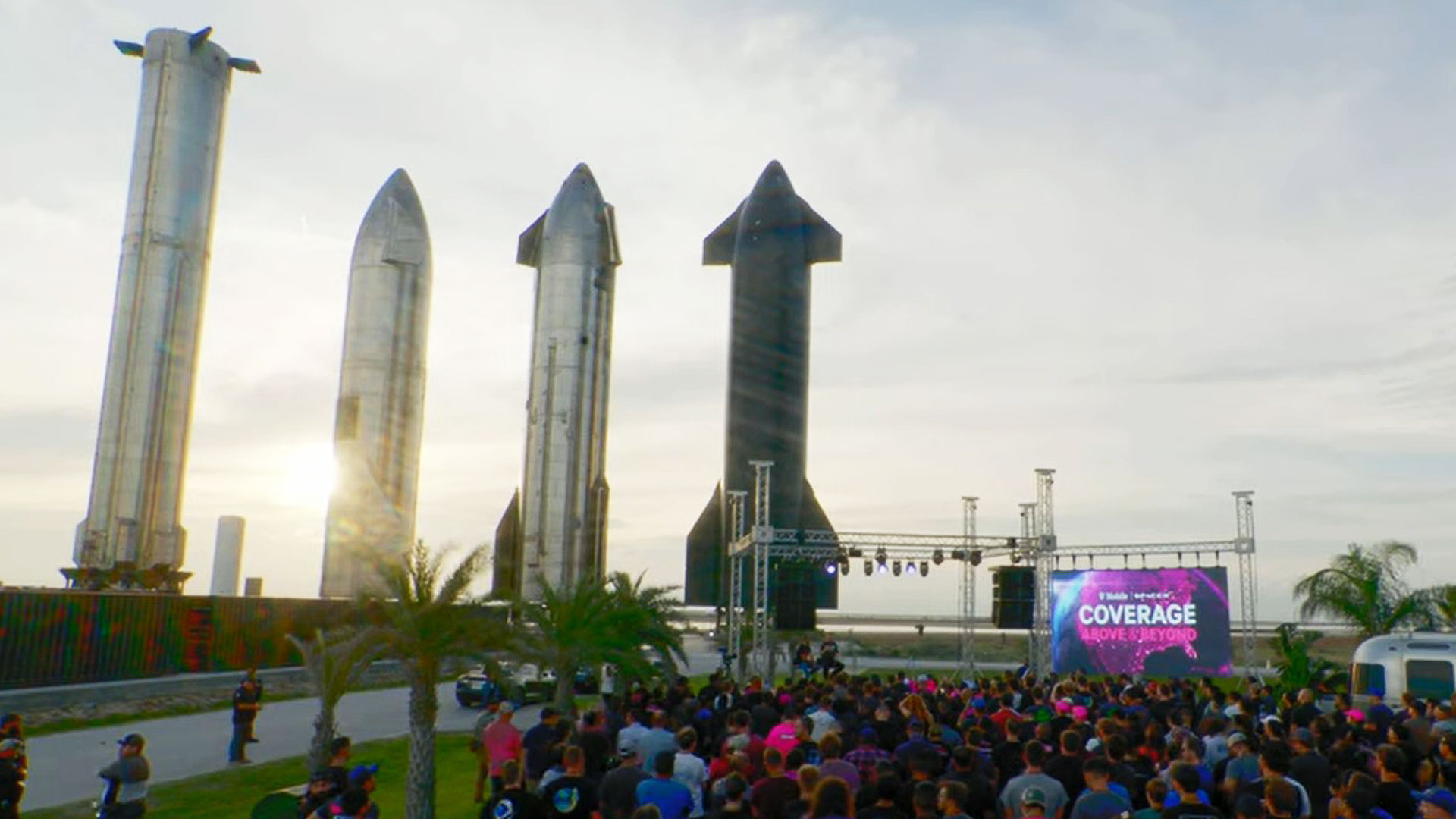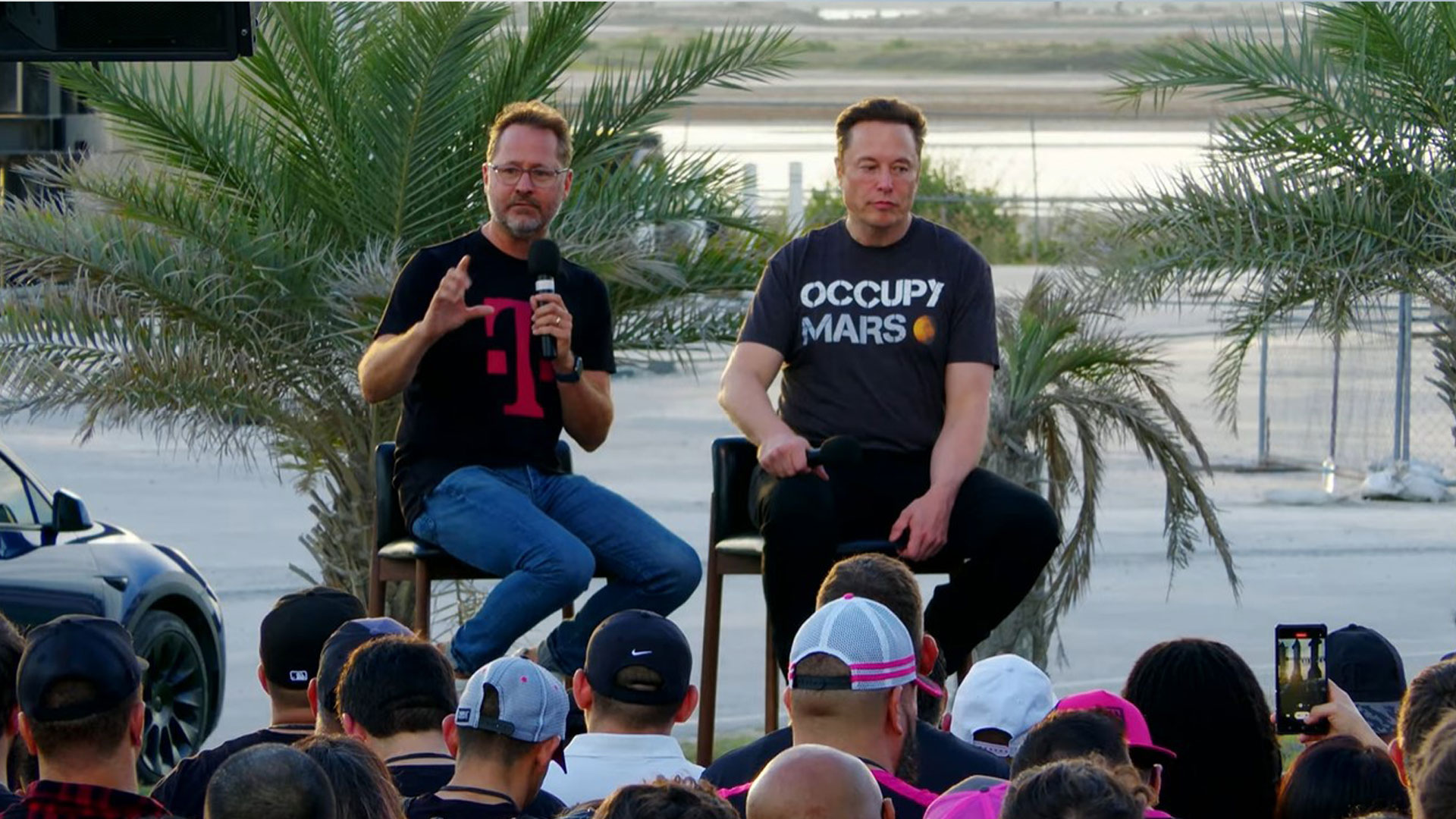This is why I want T-Mobile and Starlink's out-of-this-world satellite phone plan
It's just like the movies - but not

Yup, I'd sign up for T-Mobile and Starlink's new satellite-powered cell services today, if I could. It's that kind of a game-changer. But to understand why I think that we first have to look at the limitations of current satellite phones and what could make this system fundamentally different and more attractive to the average consumer.
I've watched enough war movies to start recognizing when the general or under-attack squad leader pulls out a satellite phone. It's like the communication device of last resort. In the jungle, wilderness, on a lonely desert island, or any number of cellular dead zones around the world, it's the only way to communicate with home base.
And it's completely impractical for most people not in the thick of battle or climbing Mount Everest.
Most satellite phones, like the Iridium line popularized in innumerable action movies, are expensive (often costing well over $1,000). And they can be ungainly because they need a huge external antenna, one that will make your late 1990s-era feature phone antenna look quaint.
Generally, satellite phones do not work indoors and they may need a cable and external antenna adapter to make sure they can connect with the network of orbiting satellites.
All of this is why we didn't build our smartphone networks on a satellite system (just our GPS system) and instead opted for ground-based cell towers to cover as much area as possible. This, of course, also meant that the cell tower growth would be primarily in major metropolitan areas, leaving huge swaths of the world with dead zones, especially in some rural areas, underdeveloped nations, remote regions, and the ocean.
Knowing all this, there was always a little bit of me that wanted to at least try a satellite phone and test it by doing my own version of Tom Hanks' Cast Away. I'm not saying I'm ready to be stranded on a desert island, but maybe a jaunt into the mountains or, better yet, a cruise where connectivity is always at a premium.
Naturally, I was intrigued by the headlines about what Elon Musk's Starlink and T-Mobile might offer, especially because I knew that many people have successfully used Musk's Starlink orbiting satellite system to connect to the Internet. And I have to admit, that, after listening to the slightly over-the-top presentation, the reality sounds even better.
Beam me up
To start with, the plan, as outlined by T-Mobile CEO Mike Sievert and Musk on Thursday, does away with most of the limitations of traditional satellite phones.
First of all, it's using a slice of T-Mobile's mid-band PSC spectrum (part of the 5G spectrum), which means that you don't need a satellite phone to connect, just your regular smartphone, albiet one on the T-Mobile network.
Secondly, the images of some mud-covered army grunt rolling out from cover to make sure his battle-scarred sat-phone has a clear view of the sky need not be applied to the T-Mobile Starlink plan.
Musk claimed that the connection will work "in your pocket, in your car."
Third, you probably won't even need to sign up for a special service. Sievert gleefully told the crowd (which seemed to cheer on cue), "I would expect the pricing for this service to be the Uncarrier's favorite price. The price that we've made famous, which is that we expect, on our most popular plans, for this service to be included for free."
Sievert later clarified that more affordable plans will probably pay an additional monthly fee for the ability to use the satellite service. But this being a tech alliance announcement and not a product rollout, no pricing information was forthcoming.

Still, I'm excited about the possibility of, say, an upcoming iPhone 14 Pro or even the Samsung Galaxy Z Fold 4 I currently have running on T-Mobile being able to connect from virtually anywhere in the world - well, not exactly anywhere.
While this plan will offer you a connection for calls and texts (and maybe a photo and even the tiniest video) in places where you'd normally have no connectivity, it won't cover more than, as Sievert explained, "the lower 48 [of the United States], ...vast parts of Alaska, Hawaii, Puerto Rico, and territorial waters and even vast parts of the world's oceans." T-Mobile is not a global company and while Starlink's satellites orbit the globe, T-Mobile's plan won't extend to Europe, Asia, Africa, Australia, etc. without international carrier partnerships, which may or may not be in the offing.
I'm also aware that this is still just a promise.
Starlink has roughly 3,000 satellites in low-earth orbit right now but none of them are equipped to support this plan. Musk explained how they must equip Starlink second-generation satellites with giant, advanced phase-array antennas. Musk highlighted the challenges of sending a signal from your phone to a satellite 500 miles overhead and that's also traveling at 17,000 miles per hour (though he added that they had it working in the lab).
In other words, it's gonna take some time to literally get the plan off the ground and into the sky and the beta rollout won't happen until 2023.
I can't lie and say that the promise of "the end of dead zones," as Musk put it, doesn't excite me. Even in the suburbs I live with them and wonder if an orbiting satellite network as a backup might not ease some of my frustration. However, I also take Sievert and Musk's point that this is not just about consumer convenience. Hikers and people lost at sea or caught in blizzards have died because they couldn't communicate. This might help, providing their phones still have power and, I think, the sky is clear.
Looking beyond the somewhat silly pomp and circumstance of the launch event, I could not help thinking that this was important and that, yes, I wanted my cellphone to also be a satellite phone because why should any of us ever be disconnected?
If you think you might want to upgrade your smartphone before the advent of a phone satellite network, check out our list of the best smartphones of 2022.
Get daily insight, inspiration and deals in your inbox
Sign up for breaking news, reviews, opinion, top tech deals, and more.

A 38-year industry veteran and award-winning journalist, Lance has covered technology since PCs were the size of suitcases and “on line” meant “waiting.” He’s a former Lifewire Editor-in-Chief, Mashable Editor-in-Chief, and, before that, Editor in Chief of PCMag.com and Senior Vice President of Content for Ziff Davis, Inc. He also wrote a popular, weekly tech column for Medium called The Upgrade.
Lance Ulanoff makes frequent appearances on national, international, and local news programs including Live with Kelly and Mark, the Today Show, Good Morning America, CNBC, CNN, and the BBC.